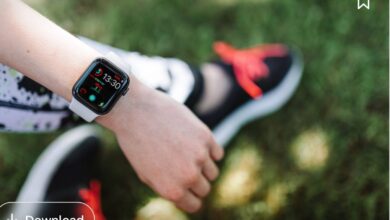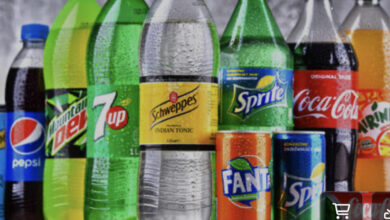DOES YOUR DOCTOR TALK TO YOU?

Does your doctor talk to you? Oh, sure he asks you why you came to see him and how long this problem has bothered you. No, I mean does he really talk to you? Does he carry on a conversation about you, your family, or current events? Does he talk sports, politics, or about subjects he knows interest you? Talking is a phenomenon that expresses one’s interest in the life of an individual. It’s my opinion that in health care, communication through conversation is primarily the province of the family doctor. The doctor who knows you best is most likely to talk to you about non-medical topics, and actually carry on a conversation.
Why do I say this? Well, somewhere during the course of the many encounters a patient has with his family doctor, a subject unrelated to healthcare or symptoms will come up that starts a discussion. The patient has shared a personal anecdote, and the doctor was interested enough to pursue the subject. At subsequent visits the doctor, interested in the patient’s life, asks for an update on the discussion from before. I think this practice is largely in the purview of family physicians and is a rare occurrence in the practices of specialists and sub-specialists. They’re the “let’s get down to business” doctors! They’re busy and don’t have time for small talk.
I had conversations with patients all the time. I was interested in them, their kids, and what they enjoyed doing. A number of people who were first patients later became friends, while for others, they were friends first and later became patients. Some examples from my experience and those of other family doctors are expressed in the scenarios I will share.
I had a patient who lived in a fairly remote part of Brown County. He was of the type who knew something about a lot of things, especially the outdoors. He had a garden on his property. My front yard was populated by moles and new runs were popping up everywhere. They were killing my beautiful yard. I asked him if his garden had a mole problem and sure enough it did. I asked what he thought was best to get rid of them. His reply was “mole beans.” The next day he brought in a plastic sandwich bag filled with dark brown “mole” beans. He said, with my index finger, I should poke a hole in a run and drop 4 or 5 beans into the run. I did that in each run, and low and behold, the moles went away. My interest in this man’s knowledge led me to ask about something I wasn’t sure he would know about, but he did, and I eliminated a bothersome problem.
A colleague of mine (Dr. C) spent several years restoring an old truck. This project came about because of a conversation he had with one of his diabetic patients. Dr. C saw this man every three months so he had many opportunities to learn details of his past life. He learned he had driven log trucks in Oregon and later cross-country moving vans. He had a “passion” for old Ford cars and trucks and had a hobby of restoring old vehicles. When Dr. C found a 1928 Ford truck that needed a total restoration, he asked his patient to help him. For almost seven years, the doctor and his patient spent Thursday afternoons and many Saturdays in the patient’s barn restoring that truck. That’s real commitment. Again, being interested in his patient’s life led Dr. C into a conversation that began a 7-year project.
There are also many examples of friends or acquaintances becoming patients. Dr. K was considering building a home, and read an article about an up-and-coming young architect who had success renovating old homes. The doctor contacted the architect, and they met to discuss how a home could be built on the six-acre lot he purchased. The architect designed a beautiful home and during the design and construction became a patient of the doctor’s. Later, despite being a marathon runner, the architect miserably failed a wellness-van stress test. Dr. K referred him for evaluation that subsequently resulted in a 5-vessel coronary artery bypass. Five months later, the architect (patient), Dr. K (the family MD), his heart doctor (cardiologist), and nurse (cardiac rehab) all ran a 5 mile race together wearing shirts labeled as in the parentheses. The patient finished way ahead of the others, but that’s not the point. They formed a team. The doctor and architect became life-long friends all because the doctor was willing to find out more about his patient than just the symptoms he was having.
Dozens of stories like this are part of the practice of Family Medicine. Many times I went to the funerals or the calling of patients who died. I attended the weddings of babies I delivered. I went to graduation parties and retirement celebrations, and often felt as close to patients as I was to my own relatives. I probably knew them better than my cousins. I certainly saw my patients more often than my cousins.
The champion of all doctors whose patients became friends is the man whose interests varied from auto racing, to farming, to horses and mules, to medicine. This doctor knew no strangers. Everyone was his friend. The only way such a relationship evolves is through one-on-one conversation and taking an interest in the patient’s hobbies, job, skills, or talents. This FP talked to patients about every nuance of Indy Car and sprint car racing. He talked about buying and boarding mules, dogs, and horses among other things. He talked about purchasing land and how to farm it. Other patients of his were police chiefs, sheriffs, and politicians, all of whom shared interests with him. He was the perfect example of a doctor who had not only patients but a lot of friends whose medical needs he fulfilled.
My point to all of this is to emphasize the humanness of most family doctors. FP’s get to know their patients because they see them often and talk to them about non-medical subjects all the time. FP’s need to know family dynamics, job stressors, and what keeps his patient awake at night. These things are only learned through conversation and communication. How well did you get to know the surgeon who removed your appendix? You probably can’t remember his name! That is, unless he insulted you or did a bad job. Did your cardiologist make conversation about anything other than your heart? I doubt it. But Dr. G knows your son was a star football player, your wife is a bridge-playing Master, and that your dog died last winter. These are all important things to the patient, and the doctor’s asking about them is an endearing trait. “That doc really does care.”
Think about it. When you see your doctor does he show interest in you and your family. If he doesn’t, he should.




